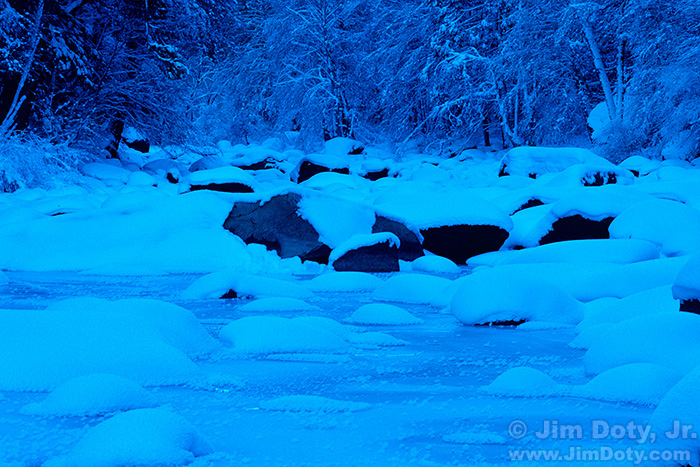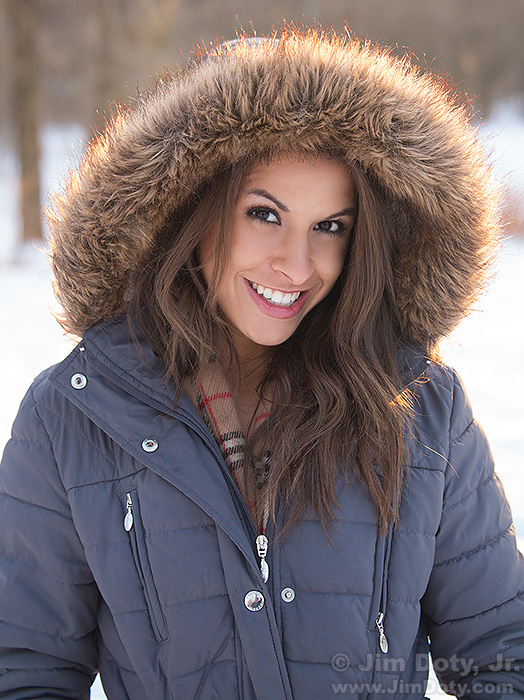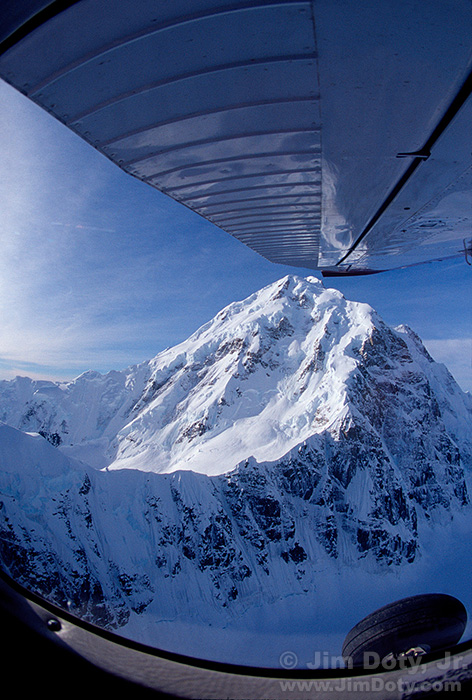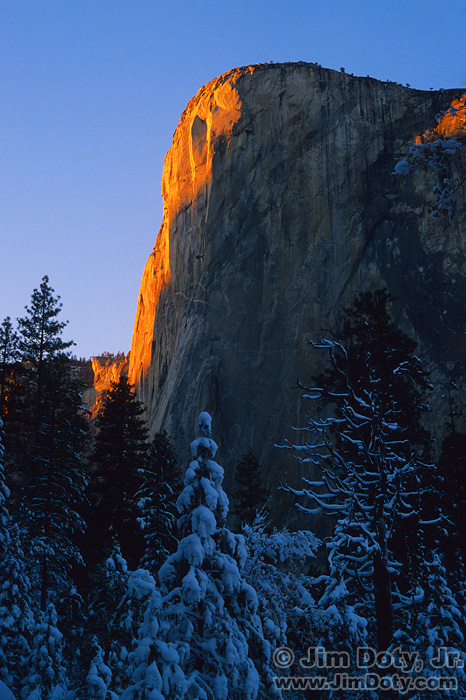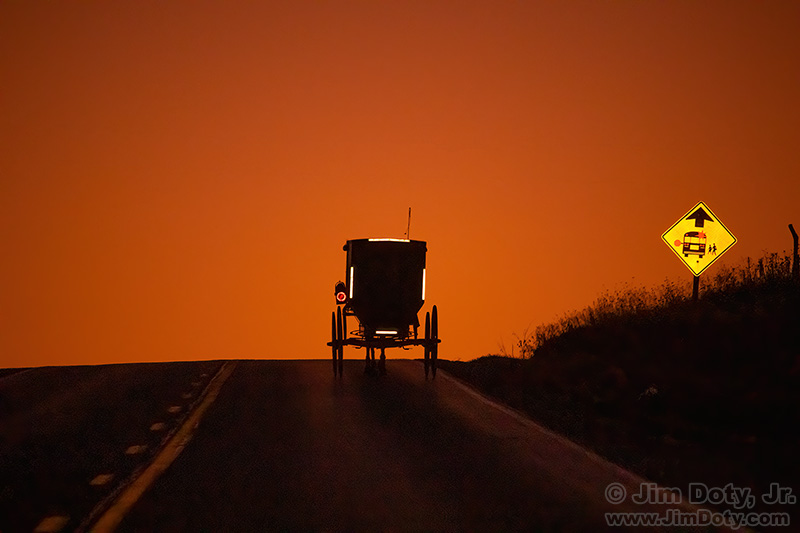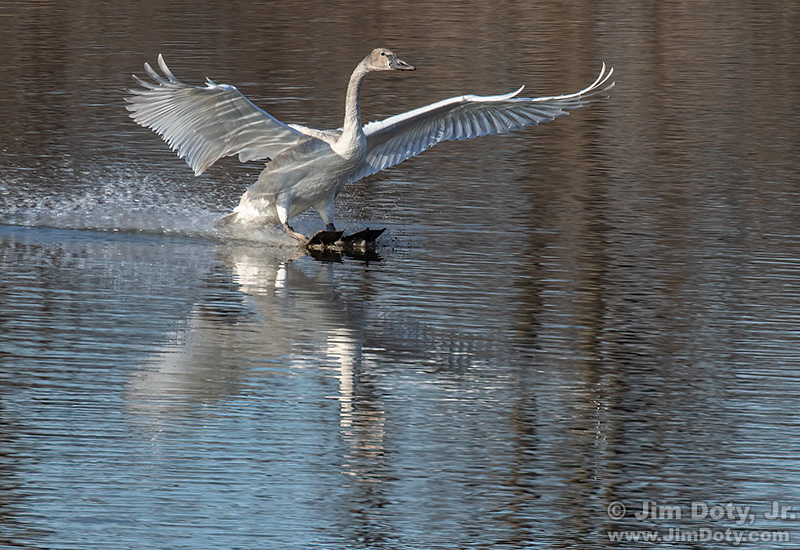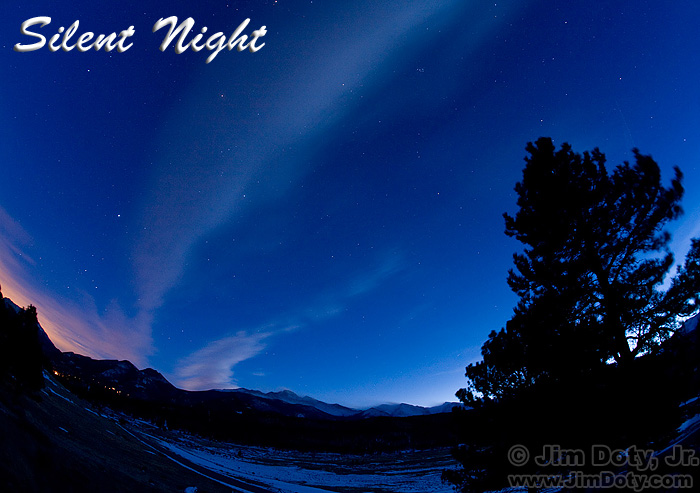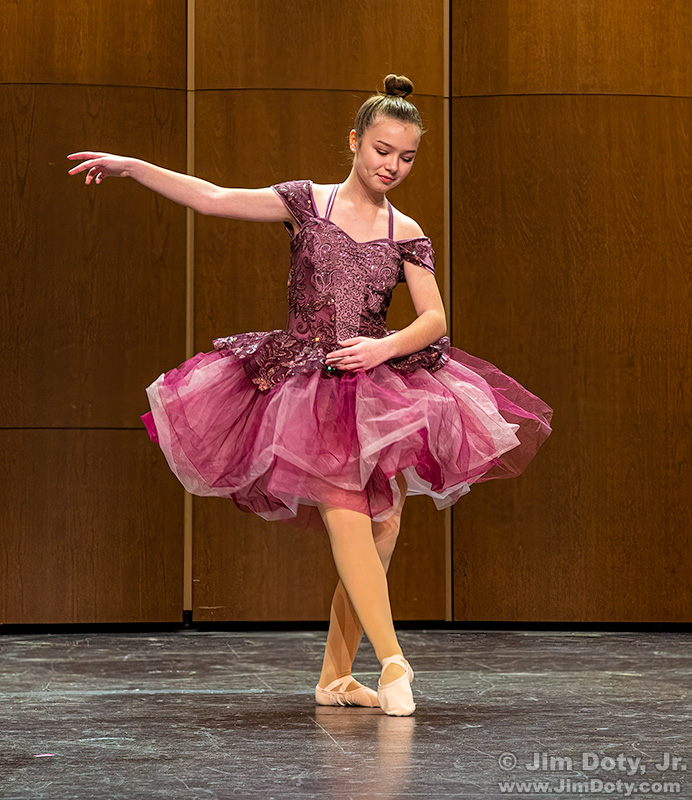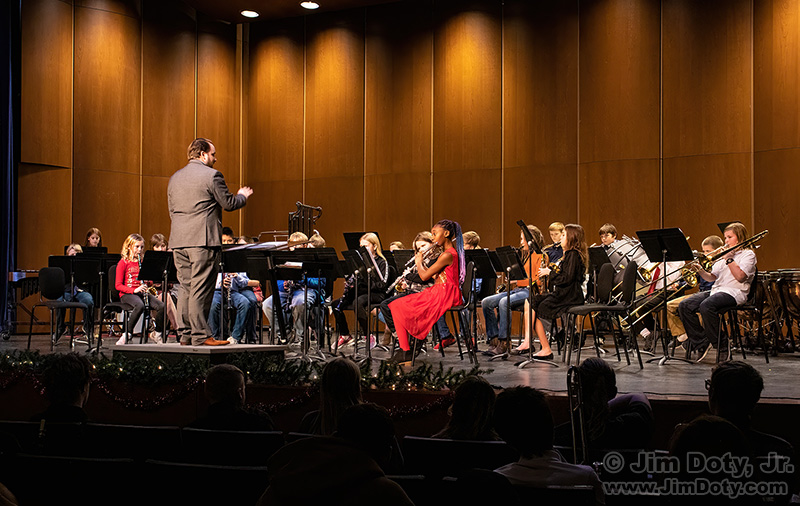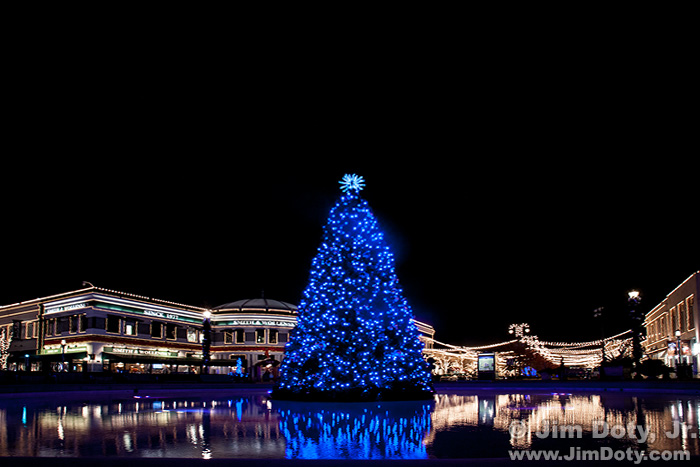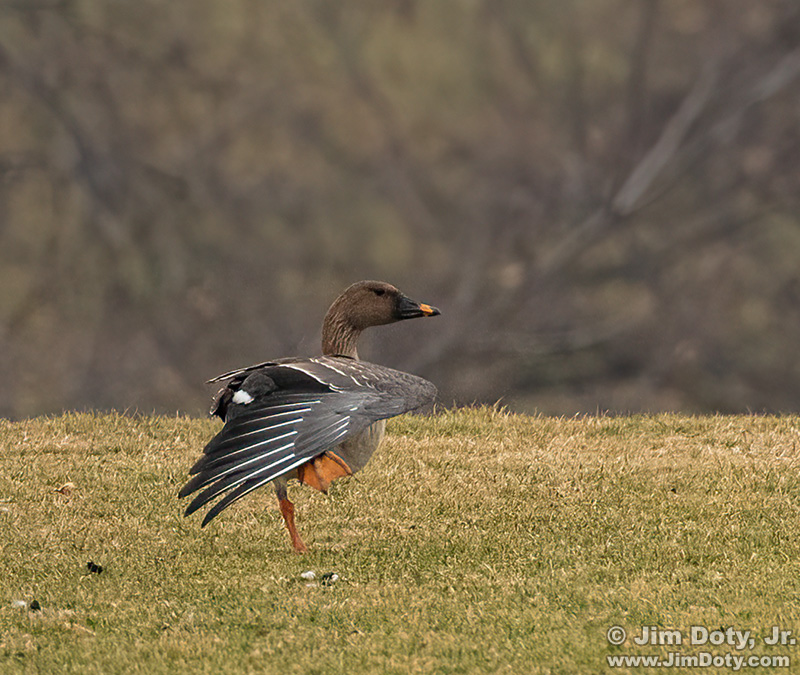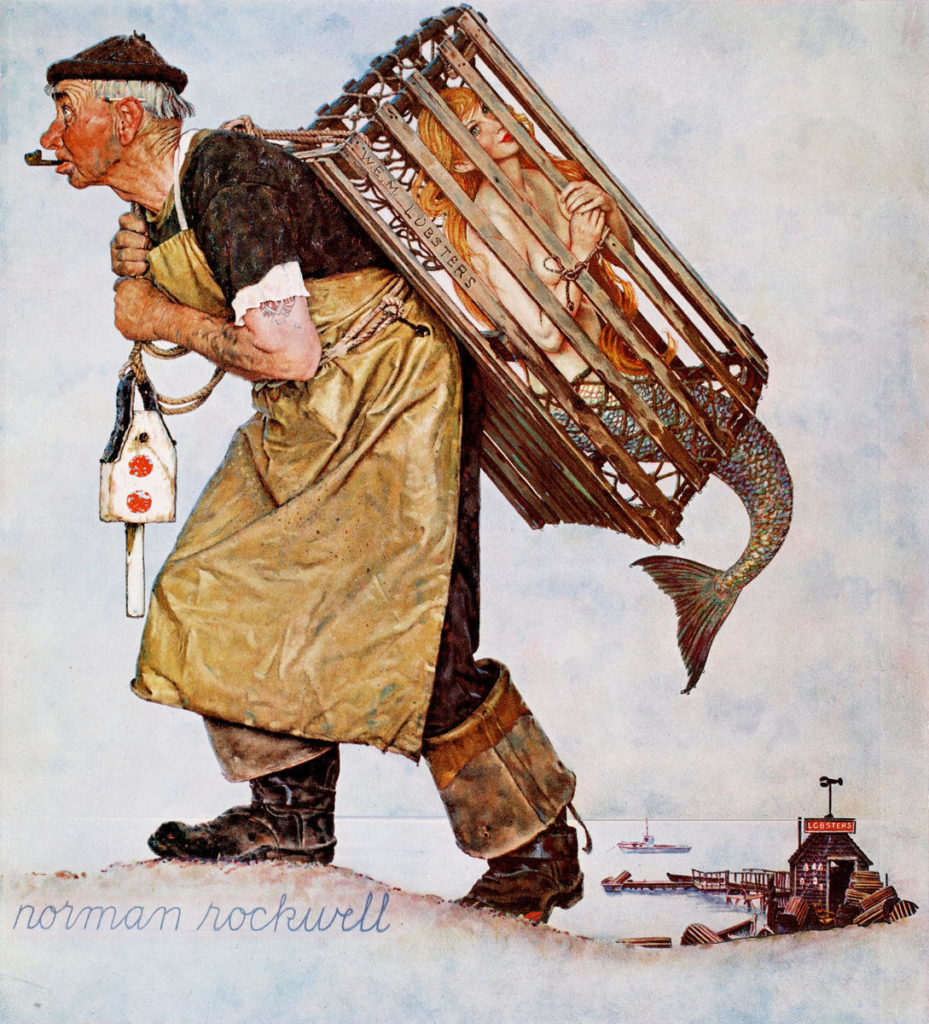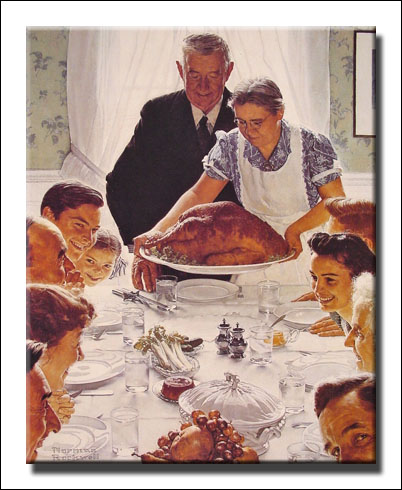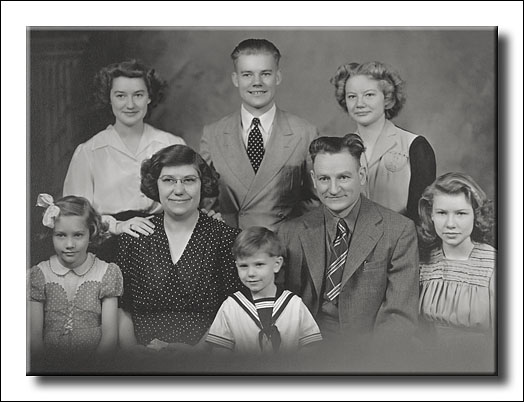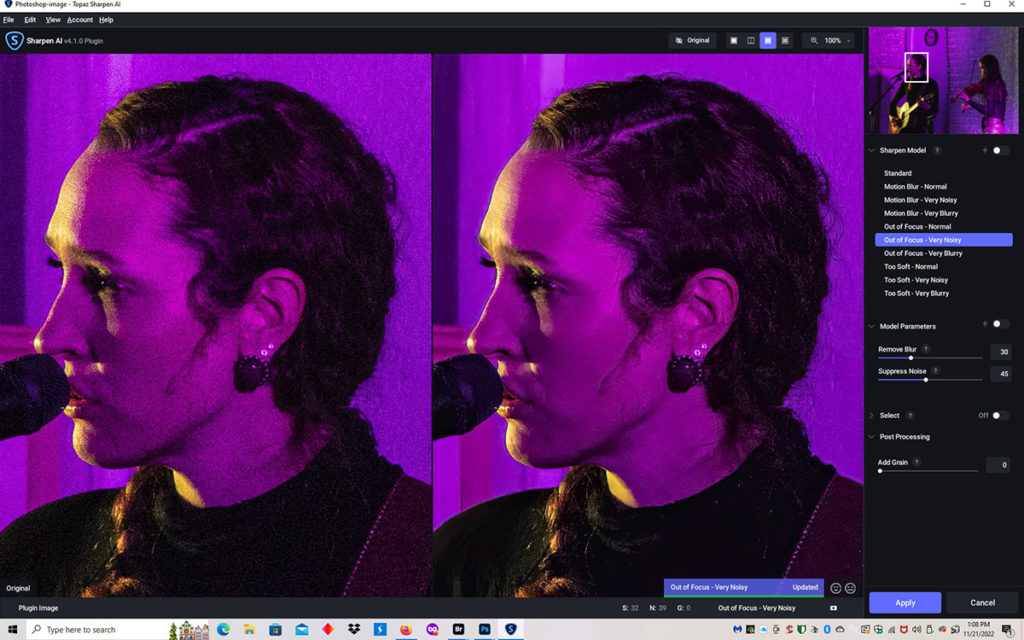Just like metering daytime winter scenes, the key to metering evening winter scenes is knowing what to meter and deciding how much exposure compensation to use.
Metering Wildlife in the Snow, Part Two
Most wildlife are medium to dark in tone, making them a challenge to meter properly in the bright, white tones of winter. If you trust one of your camera’s automatic exposure modes, the odds are good you won’t get the best exposure. If you switch over to manual exposure and make the right decisions, you can get great exposures and better quality photos (more about that later).
Metering Wildlife in the Snow, Part One
Metering dark toned wildlife in the snow is a major exposure challenge. It is usually best to avoid large “burned out” areas (washed out, featureless white) in a nature or landscape photograph, but with properly exposed snow, the wildlife can be so dark as to lose all texture. On other hand, metering for the wildlife can burn out the snow. So what do you do? And what about the complications of metering white animals?
Metering People in the Snow
The white snow in a winter scene can and often does fool a camera meter into underexposing a portrait, so here are the steps to take to get the right exposure. I throw in a few portrait suggestions too.
Metering Daytime Winter Scenes
Metering for scenes with a lot of snow can be tricky since the bright snow fools the camera meter. I see a lot of winter photos with gray snow, which means the camera meter did exactly what it was designed to do. The solution is quite simple provided you know what to do.
How To Series: Winter Photography
In addition to all of the usual photographic challenges, winter provides some extra complications, especially in terms of metering. So I began this series of articles on winter photography. Check out the links below. The articles will help you meet the unique challenges of winter photography. So get out there, have fun, and create some great winter images!
Get a Quality DSLR and Two Lenses for $500
Yes, you can get a quality, name brand DLSR with two lenses for under $500 at Canon USA. I found this particular special this evening.
Pushing the Limits: $239 lens vs $2159 lens
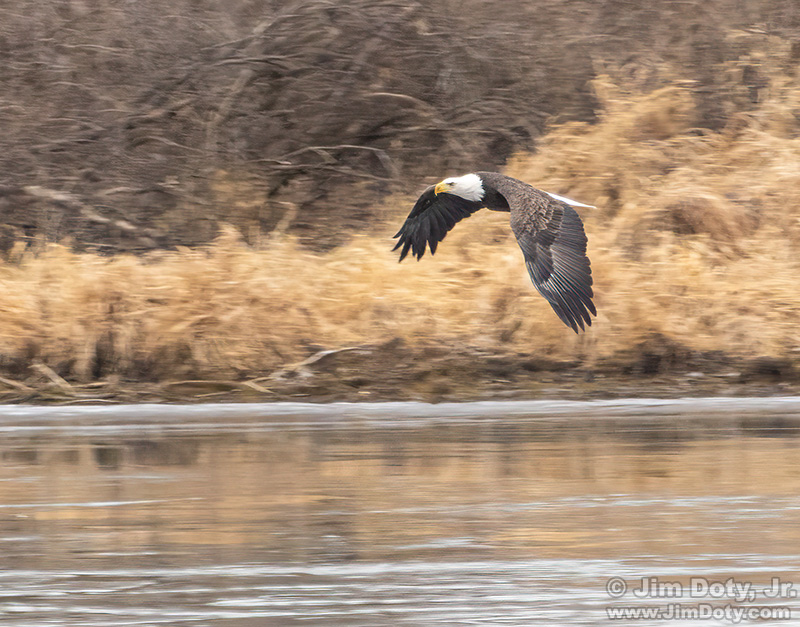
Is a $239 lens as good as a $2159 lens? Much of the time, yes (see the first link at the end of this article). Sometimes no. It depends on the photo situation. I get lots of equipment questions and some of them have to do with photography on a tight budget. I’ve been comparing a refurbished Canon SL3 camera and a refurbished Canon EF-S 55-250mm lens to a Canon 7D Mark II camera with a Canon L series 100-400mm lens.
Can a $239 Lens Do the Job of a $2159 Lens?
Martin Luther King Jr: “The Other America” Speech
Martin Luther King’s “Other America” speech should be as well known and well listened to as his other more famous speeches. People need to learn what life is like in the “other America” King describes in powerful and compelling words.
Martin Luther King – “I’ve been to the mountaintop” – full speech (audio) with still photos
This is the audio (with still photos) of the entire, powerful, prophetic speech MLK made to a packed church in Memphis, Tennessee, on 3 April 1968, just a day before he was assassinated.
Martin Luther King’s final speech – “I’ve been to the mountaintop” – final highlight
This is the final and famous highlight from the powerful, prophetic speech MLK made to a packed church in Memphis, Tennessee, on 3 April 1968, just a day before he was assassinated.
MARTIN LUTHER KING – “I have a dream” – text

Martin Luther King Jr.
Today is Martin Luther King Day in the United States. Martin Luther King, Jr. was born January 15, 1929. He was a Baptist minister and a prominent civil rights advocate. King was the youngest person to receive a Nobel Peace Prize when it awarded to him in 1964. He was assassinated April 4, 1968 in Memphis, Tennessee.
One of his most famous speeches was delivered at the Lincoln Memorial August 28, 1963. Often referred to as the “I have a dream” speech, it is one of the most significant and powerful speeches of the 20th century. A portion of the speech follows. Links to the full speech and an audio file are at the end of this post.
Martin Luther King – “I have a dream” – full speech
Martin Luther King, I have a dream, the full speech, delivered at the Lincoln Memorial August 28, 1963.
Martin Luther King, Jr., “I have a dream” – 5 minute highlight
Today is Martin Luther King, Jr. Day in the United States. This is a 5 minute highlight from the end of the speech which was delivered at the Lincoln Memorial August 28, 1963. A video of the whole 17 minute speech is here.
Experiment: Canada Geese at 380 Yards with a Focal Length of 400mm
After photographing our rare Tundra Swan, I was getting ready to leave Home Lake when I had an opportunity to test the kind of results I could get photographing distant geese with a 100-400mm lens. I was on the dam at Home Lake so I positioned myself so I was in line with the water facility apparatus in the lake and some distant geese. I did a reference photo at 100mm.
Trumpeter Swan and Tundra Swan
A Trumpeter Swan and Tundra Swan have been spending time together at one of our local lakes. Tundra Swans don’t usually get this far south and I wanted some photos. This is our second rare bird visitor this winter. In December we had a very rare Tundra Bean-Goose that spent a couple of weeks with our Canada Geese before moving on (links below). The Tundra Bean-Goose was supposed to be in far Northern Europe or Russia.
Merry Christmas!
Snow glistens in the last light of dusk.
Distant clouds glow with the fading light from the sun, long since set.
Dance Recital, December 23, 2022
Living Art Studios in Lamoni Iowa had their annual winter performance, December 23. Dancers of all ages and experience levels had their opportunity to do their thing on the big stage at the Shaw Auditorium on the Graceland University Campus. Each dance was introduced by a reading from of the classic poem, “Twas the Night Before Christmas”. Everyone performed to music of the Christmas season.
Lamoni Band Concert, December 19, 2022
A selection of photos from the band concert at the Shaw Center Auditorium, Graceland University, Lamoni Iowa. Click any photo to see a larger version.
How to Photograph Christmas Lights with Your DSLR, Mirrorless Camera, or Smartphone
‘Tis the season and there are a lot of Christmas lights out there to photograph. It is fun and easy, and with a few tricks up your sleeve there are creative things you can do. Many of these techniques can be used on other lights throughout the year, so this is a good time to practice your skills for photographing lights.
iPhone vs Canon Rebel SL3
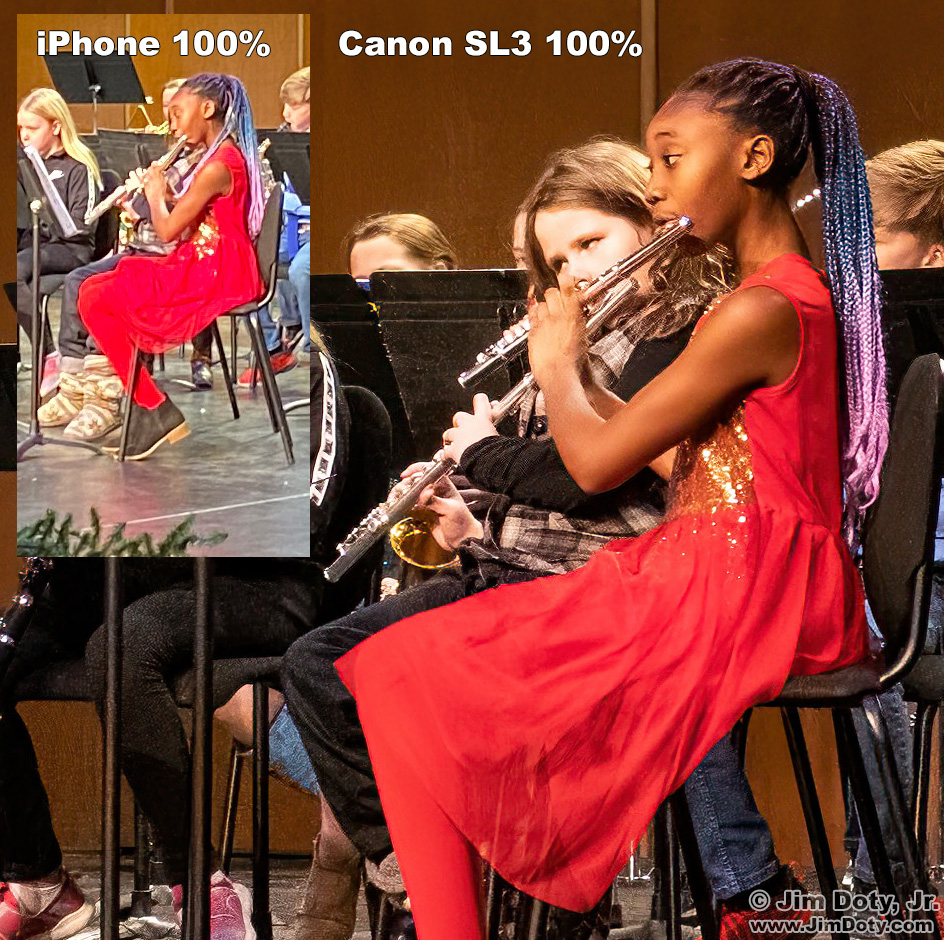
Last night (Monday) I was photographing a band concert for our weekly, small town newspaper. The problem is the photo deadline is 5 pm Monday for the Thursday paper and the concert began at 7:30 pm, 2 1/2 hours after the deadline. Depending on where the newspaper staff is in producing the issue, sometimes they can squeeze in another photo or two that come in after the deadline. The sooner I can get them photos, the better, so I sent the paper two photos taken with my iPhone, one of the elementary school band and one of the high school band. But I used a Canon SL3 for most of the concert. I downloaded the SL3 memory card and sent the paper two more photos just in case they were running really late. Why? The Canon SL3 creates dramatically better photos in less than optimum lighting conditions.
Topaz Software: Concert Photo
Last night I was photographing the local elementary and high school band concert for the local paper. The light level on the stage was low enough that I needed to use an ISO of 1600. That meant a fair amount of digital noise.
Andromeda Galaxy and its Satellite Galaxies
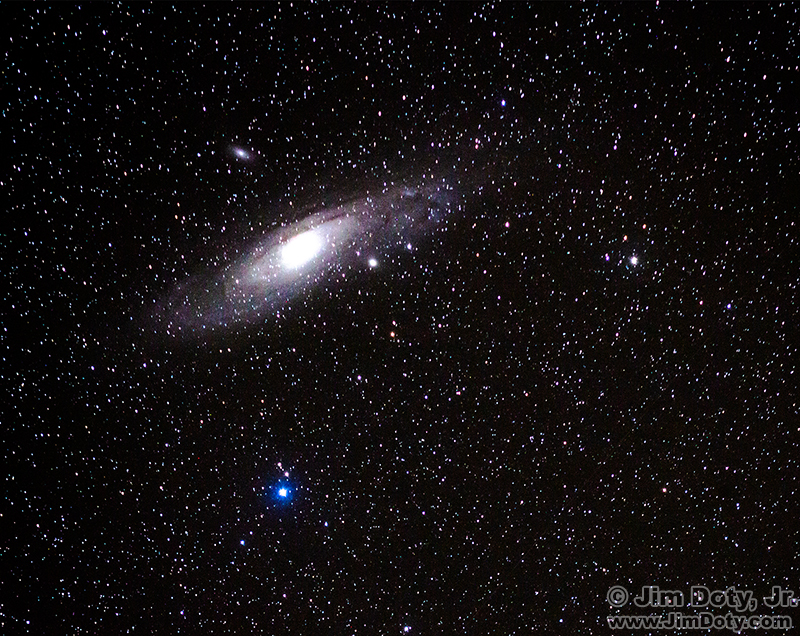
For me, December is not only the month for Christmas Season photos and portraits, on reasonably pleasant December nights with no wind it is the time of year to photograph the night sky. Winter has better night sky “seeing” than the other three seasons. Cold air holds less moisture to there is more visual clarity of the night sky. Unfortunately, where many of us live winter is also very cold so I do most of my winter night sky photography in December since it is usually more tolerable.
Tundra Bean-Goose, Part 2
I went looking for the Tundra Bean-Goose again this afternoon (see the prior article), along with one of my young grandsons. The light was much better than yesterday which meant a lower ISO setting on the camera and a lot less digital noise than at ISO 6400 late yesterday afternoon. That would mean better photos.
Rare Event: Tundra Bean-Goose in Iowa
This is not a great photo, but it is a photo! For the last week a single Tundra Bean-Goose has been hanging out with Canada Geese at the lakes, farm ponds, and corn fields around Lamoni Iowa. This week is the first time ever this goose has been spotted in the state of Iowa. It should be in Northern Europe or Northern Russia so it is thousands of miles away from home. I finally spotted it yesterday.
Norman Rockwell’s Sense of Humor: “Mermaid”
I am a Norman Rockwell fan and I have been studying his life and work. Norman Rockwell was brainstorming one day and he came up with a humorous idea for a painting. A Maine lobster fisherman catches a mermaid in his lobster trap. Rockwell went through quite a long process to go from the initial idea to the final painting.
Happy Thanksgiving!
Thanksgiving in Haxtun
When I was growing up, we spent many a Thanksgiving at grandpa’s house in Haxtun Colorado. Thanksgiving was a much anticipated and happy time. We would leave home on Wednesday afternoon after dad got home from work. It was a long 7 hour drive to Grandpa’s house in those pre-interstate highway days, so it would be really late by the time we arrived.

